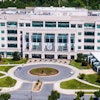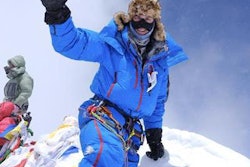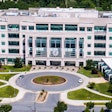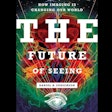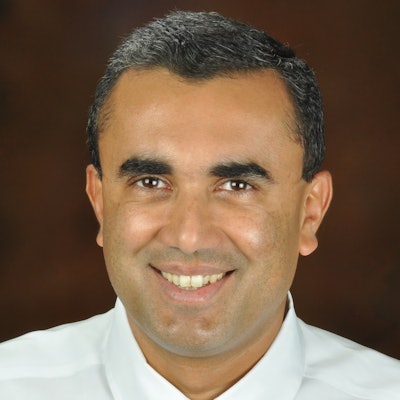
By winning the Australian Open tennis tournament last month, the incomparable Roger Federer accomplished the seemingly impossible task of securing his 20th grand slam. In doing so, he also became the second oldest man to win a grand slam title, particularly noteworthy in this age of power tennis -- and given that many of his younger rivals and competitors were reeling under various physical impediments that affected their performance or prevented their even figuring in the tournament.
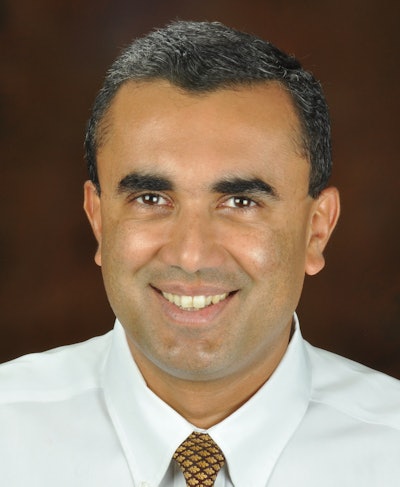 Dr. Arjun Kalyanpur from Teleradiology Solutions.
Dr. Arjun Kalyanpur from Teleradiology Solutions.The question on everyone's lips was and remains the following: From what fountain of youth doth this our Roger drink? Various theories have been proposed, including the consumption of wombat meat (!), as facetiously offered by the comedian Will Ferrell.1 However, perhaps the most telling information came from Federer himself when he responded to an interviewer with the simple, yet profound, "I've just got to keep a good schedule ... need to be careful in my planning, and decide beforehand what are my goals, my priorities."2
In an era in which radiologist burnout is being recognized as a quasi-clinical syndrome and written about prolifically,3,4,5 it is my belief that Federer's approach deserves a level of scrutiny from members of our profession. My analysis of his approach yields the following six points (one for every Australian Open title that Federer has won); radiologists should consider them to ensure they are able to remain productive and to continue to love their profession and enjoy their work, following in the tradition of the great tennis champion.
1. Use ergonomics
No player today has a more graceful, fluid, and ergonomic style of play than Federer, which is the essence of his longevity as a tennis professional. Modifications to his equipment over the years, including the recent adoption of a racket with a larger face, have assisted in his success.
For a radiologist, having a reading workstation that is set up well, with an ergonomic keyboard and mouse, can significantly affect one's performance, health, and, ultimately, longevity. In particular, the multiple benefits of a standing workstation have been recognized.6
2. Break it up
Last year, the Fed skipped the entire clay court season to conserve his energies for the grass court season (a surface on which he particularly excels). In general, he schedules his tournament calendar carefully, with regular breaks.
Similarly, radiologists should break up their workday with stretch breaks and other relaxation measures, which can significantly improve health. In addition, yoga and meditation are of particular benefit.
In our organization, we have utilized several techniques to ensure the staff's physical well-being, including a yoga-at-work program where staff members do a brief 10-minute, instructor-guided standing yoga session beside the work desk. This allows for minimal interruption of work while promoting a sense of peace and calm. At our headquarters, we have an in-house masseur who provides neck and shoulder massages at the work desk, a popular and effective intervention to release muscle tightness during the workday.
3. Location/'workation'
Federer is known for practicing off-season in exotic locations such as the Maldives, which allows for time spent with family as well as greater professional satisfaction.
Correspondingly, for a radiologist, working for a teleradiology service provider gives one the opportunity to work from interesting locations and combine work with vacations. Additionally, working from home has been recognized as one of the significant benefits of a teleradiology practice, especially for young parents and those supporting or caring for elders. By allowing the radiologist to balance work and home responsibilities without the added pressure of a stressful commute, the phenomenon of burnout can be kept at bay.
Another value proposition is the creation of a reading site in a time zone of advantage. In the early years of teleradiology, Hawaii was one such popular destination. Working from locations in Europe (an example is Spain, from where our radiologists have the opportunity to work) or Asia similarly provides time zone advantages for U.S. after-hours coverage, which obviates the need for being up at night, another significant longevity booster.
In our teleradiology practice, our radiologists are located in different time zones across the globe, which allows us to provide extended hours of coverage without anyone having to stay up all night. This is important given that sleep is such an important factor in preserving long-term health.7
4. Take help
Federer is not the only top tennis player to recognize that the team supporting him around the clock is key to his continued success and, ultimately, his longevity as a tennis professional. The upper echelons of the tennis world travel with support teams and use the latest available technologies, which are permitting the peak performance age of tennis players to be extended far beyond what was previously possible.
In a similar manner, radiologists can benefit from the use of teleradiology support services. For those radiology groups that cover hospital emergency departments 24/7, the use of an offsite teleradiology service to cover their nights and end their night call can greatly benefit the longevity of the members of the group.8
Additionally, the use of intelligent workflow tools, analytics, and, most recently, artificial intelligence (AI) algorithms, can go a long way toward boosting radiologist longevity. Deep-learning algorithms are currently being developed that aim to enhance the efficiency, productivity, and accuracy of radiologists. By all present indications, embracing AI tools will be an effective way for radiologists to protect themselves from the dangers of overwork and simultaneously reinvent themselves and the profession in a fast-evolving healthcare environment.9
5. Keep learning and teaching
Even at the ripe old tennis age of 36, Federer retains the ability to learn new skills and improve existing ones (note his recently improved backhand). And he is always willing to share his insights into the sport with his fans and peers (his postmatch press conferences are remarkably perceptive and candid).
Similarly, for a radiologist (not in academic practice) to remain mentally agile, enthused, and constantly refreshed, there is no better avenue than education. While traveling to conferences is an option, in today's world, the availability of convenient online teaching resources (our RadGuru.net radiology education portal is one example) can help practicing radiologists learn new skills and remain relevant and contemporary in their practice environment. Such online tools also permit radiologists to share their experiences with a virtual classroom across the globe.
6. Giving back
It is well-recognized that happiness is crucial for longevity. And to quote Booker T. Washington: "Those who are happiest are those who do the most for others."
Radiologists, I would submit, are no exception to this. To be able to use one's education, skill, and experience and in the process to give to others is a unique gift. Organizations such as our Telerad Foundation and also Rad-Aid support hospitals in underserved areas where radiologists are not available. By providing honorary/voluntary support to such organizations, radiologists can build reserves of positive energy and good cheer, which are integral to staying youthful and optimistic. Through his own foundation, the peerless Roger Federer supports education for underprivileged children and is vocal in describing how this work keeps him engaged and motivated.10
The ability to stay youthful and motivated also requires a sense of humor, an element of self-deprecation, and large doses of optimism and positive energy, all of which are traits that Federer displays in abundance in his media interactions. Likewise, by not taking ourselves too seriously, we radiologists can ensure that we continue to appreciate what we do as a profession and what we have going for us, rather than dwell on the negatives that befall us along the way.
John McEnroe, another tennis great, has commented on how it is Federer's love and joy for playing tennis that is responsible for his enduring success.11 Simple words but deep in meaning -- fundamentally, it is the love of what we do that enables us to enjoy our work and to want to continue doing it, resulting in longevity in our careers. Keeping that love alive should therefore be our goal.
Every one of us has many radiologic grand slams within us, and the capacity to reach the full potential of our endeavors is something that the glittering tennis career of Roger Federer can guide us toward.
References
- Australian Open TV. Will Ferrell interviews Roger Federer live on Rod Laver Arena [Video]. YouTube. https://www.youtube.com/watch?v=MLlS6WhgH_0. Published January 16, 2018. Accessed February 21, 2018.
- Agence France-Presse. 'Age is just a number' for Roger Federer as he targets No. 1 spot in Rotterdam. The National. https://www.thenational.ae/sport/tennis/age-is-just-a-number-for-roger-federer-as-he-targets-no-1-spot-in-rotterdam-1.703677. Published February 11, 2018. Accessed February 21, 2018.
- Henderson M. Unique stressors lead to burnout in radiology. RSNA. http://www.rsna.org/news.aspx?id=19244. Published May 19, 2016. Accessed February 21, 2018.
- Madden Yee K. Radiologist burnout: Worse than we thought? AuntMinnie.com. https://www.auntminnie.com/index.aspx?sec=ser&sub=def&pag=dis&ItemID=116171. Published December 28, 2016. Accessed February 21, 2018.
- Harolds JA, Parikh JR, Bluth EI, Dutton SC, Recht MP. Burnout of radiologists: Frequency, risk factors, and remedies: A report of the ACR Commission on Human Resources. JACR. 2016;13(4):411-416. doi: https://doi.org/10.1016/j.jacr.2015.11.003.
- Leech J. 7 benefits of a standing desk. Healthline. https://www.healthline.com/nutrition/7-benefits-of-a-standing-desk. Published June 18, 2017. Accessed February 21, 2018.
- Leech J. 10 reasons why good sleep is important. Healthline. https://www.healthline.com/nutrition/10-reasons-why-good-sleep-is-important. Published June 4, 2017. Accessed February 21, 2018.
- Walter M. 4 ways working overnight shifts can affect a radiologist's performance. Radiology Business. http://www.radiologybusiness.com/topics/practice-management/quality/4-ways-working-overnight-shifts-can-affect-radiologists-performance. Published January 22, 2018. Accessed February 21, 2018.
- Pearson D. Artificial intelligence in radiology: The game-changer on everyone's mind. Radiology Business. http://www.radiologybusiness.com/topics/technology-management/artificial-intelligence-radiology-game-changer-everyone's-mind. Published October 20, 2017. Accessed February 21, 2018.
- Foundation Talk Volume I [Video]. Roger Federer Foundation. http://www.rogerfedererfoundation.org/en/videos/videos/foundation-talk/. Accessed February 21, 2018.
- Mirza R. Tennis legend John McEnroe amazed by the longevity of Roger Federer. Sky Sports. http://www.skysports.com/tennis/news/12110/11249182/tennis-legend-john-mcenroe-amazed-by-the-longevity-of-roger-federer. Published February 13, 2018. Accessed February 21, 2018.
Dr. Arjun Kalyanpur is chief radiologist and CEO of Teleradiology Solutions, a global healthcare company that reports radiology scans for more than 100 healthcare facilities in the U.S., Asia, Africa, and Europe. He is a board-certified and fellowship-trained radiologist who obtained his medical and radiologic training at All India Institute of Medical Science (AIIMS) in New Delhi and Cornell University and Yale University in the U.S.
The comments and observations expressed are those of the author and do not necessarily reflect the opinions of AuntMinnie.com.

